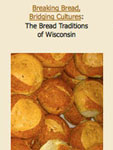Center for the Study of Upper Midwestern Culture

This website is the virtual home of the Center for the Study of Upper Midwestern Culture, devoted to preserving the languages and cultural traditions of this region, roughly defined as Minnesota, Wisconsin, and Michigan's Upper Peninsula. While originally home to Woodland and Plains American Indians, and then a varied population of European American populations, this region more recently has welcomed increasing numbers of African, Asian, and Hispanic immigrants.
A glimpse at some of the materials the Center has gathered is available through six virtual exhibits accessible through the website. These exhibits include one devoted to Heikki Lunta, a folk legend born during the reawakening of Finnish ethnic consciousness on Michigan's Upper Peninsula in the 1970s; another on bread-making traditions in Wisconsin, including several images from German American cookbooks; and another including images depicting European American ethnic life on the South Shore of Lake Superior; other exhibits feature German American folk music in Wisconsin, some of which dates to the 1930s.
The website also features 20 video podcasts on aspects of community life in southwestern Wisconsin, as well as extensive guides to archival collections on Upper Midwestern life at physical archives at the University of Wisconsin and throughout the region.